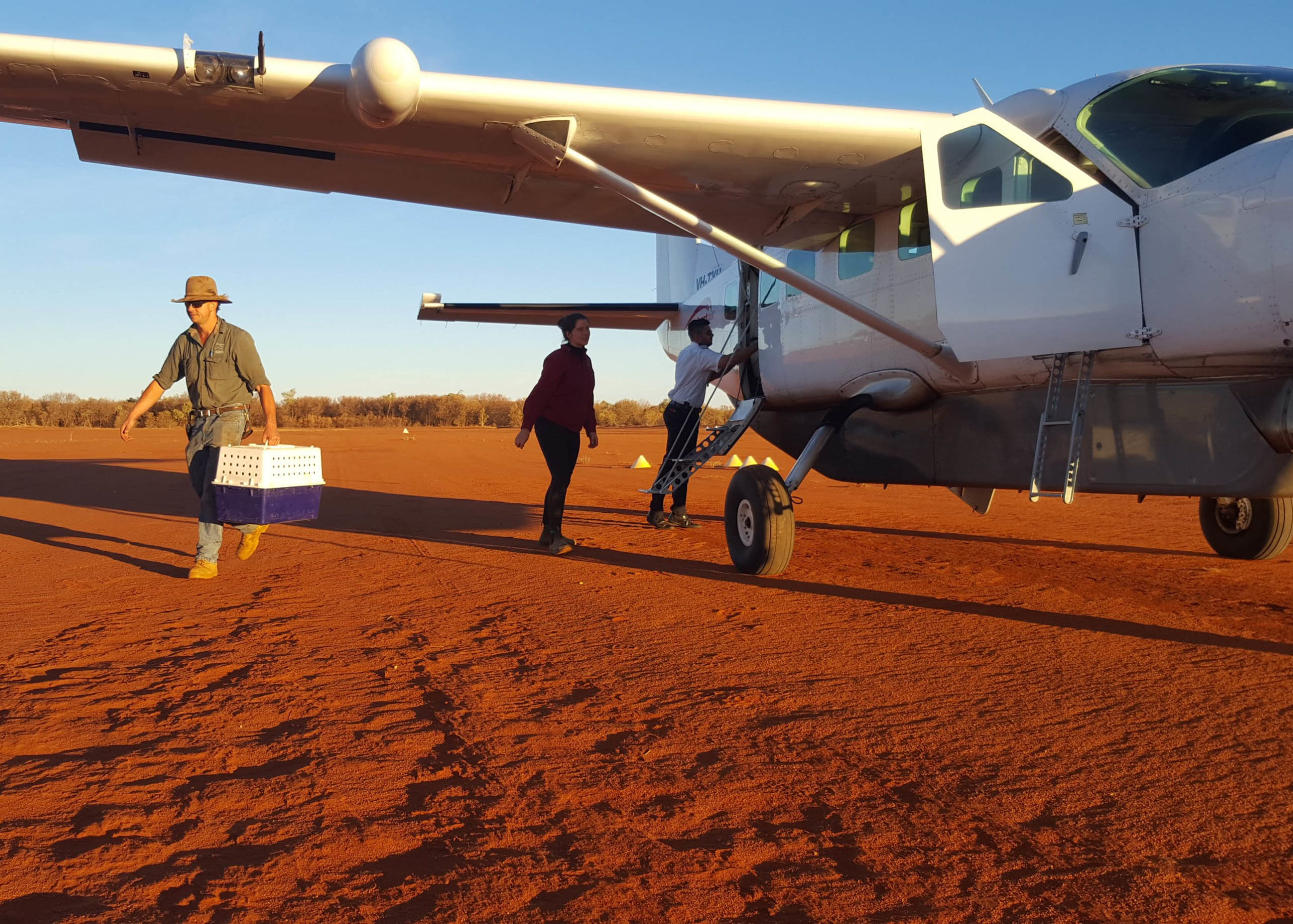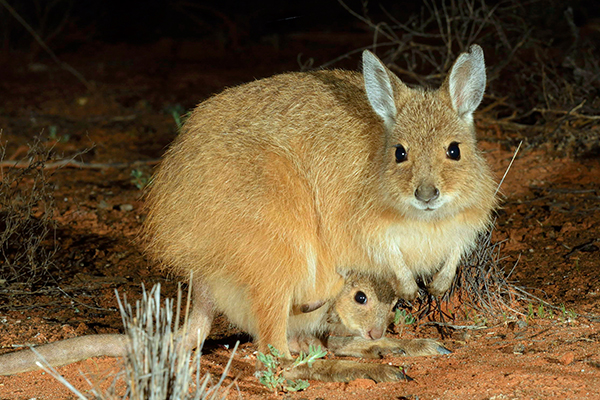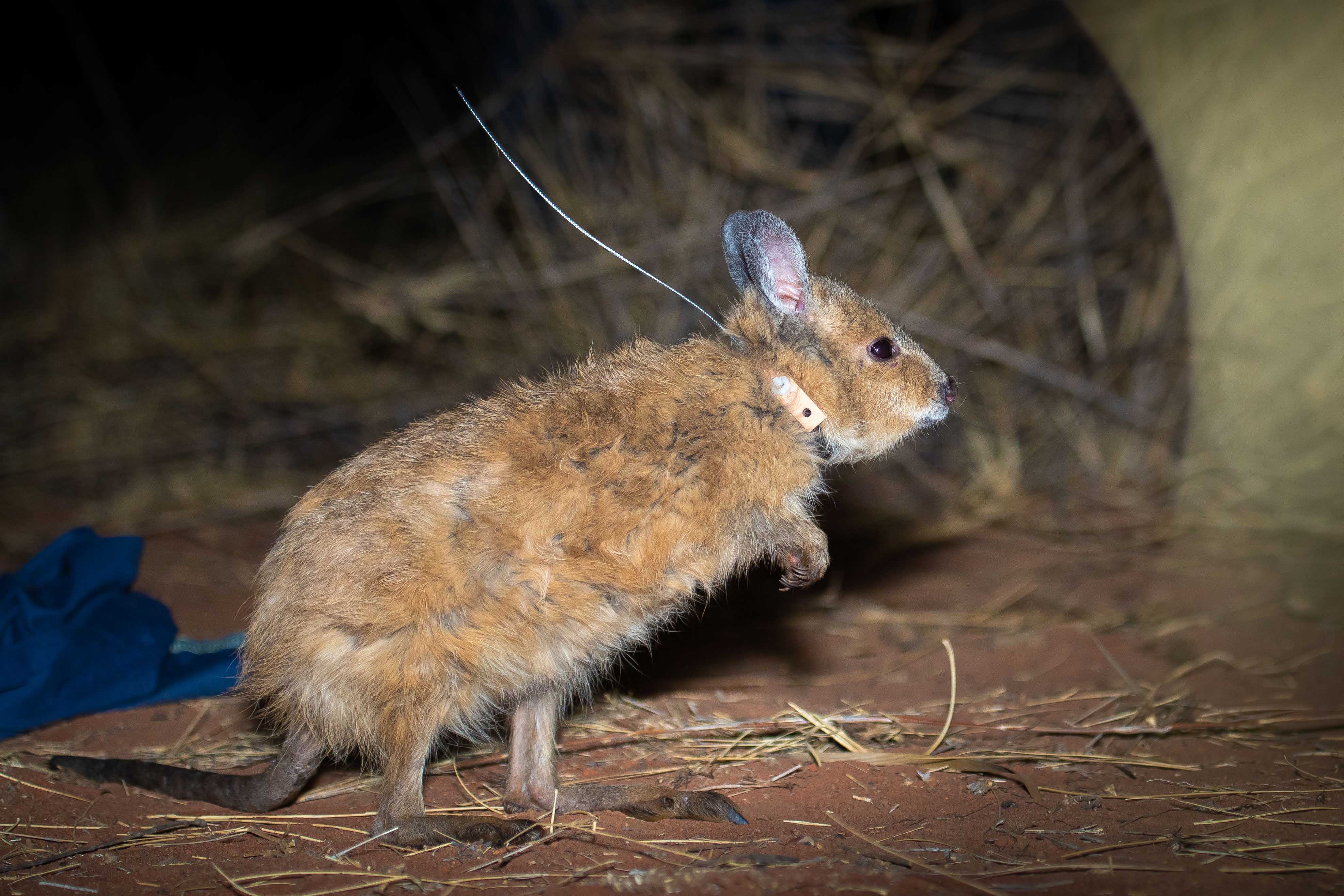This week, the last of Scotia Wildlife Sanctuary’s endangered Mala (Rufous Hare-wallaby) are travelling 1,500 km back to Newhaven Wildlife Sanctuary; a momentous journey for these small, nocturnal macropods.
The translocation marks not only the final round of AWC’s planned Mala releases into Newhaven’s Stage 1 fenced area, but also the last homecoming of Scotia’s Mala population – now finally restored to their historical range in Australia’s red centre.
Reaching this point is a major achievement and moves AWC another step closer to our goal of creating a genetically robust, self-sustaining, wild Mala population that will ultimately increase global numbers by at least 60%.
 © Darcy Ginty/AWC
© Darcy Ginty/AWC
A VIP journey of 1,500 kilometres
A total of 34 Mala were trapped by the AWC team this week at Scotia, and on Wednesday the animals were transferred by charter plane to Alice Springs. Reflecting their VIP status as one of Australia’s most endangered mammals, they were granted a special exemption from interstate COVID-19 travel and quarantine requirements.
Three males have now joined the captive breeding population at Alice Springs Desert Park, while the remaining 31 were transported by plane to Newhaven for release on Wednesday night.
Central Australia’s Mala
Wild Mala were once abundant across the sandy habitats of Central and Western Australia. Sadly, more than two decades ago the marsupial went extinct on the mainland, pushed over the edge by feral predators and destructive, unmanaged wildfires. Before the last mainland population blinked out completely however, several ‘insurance populations’ were established in feral cat– and fox–free areas, including at AWC’s Scotia Wildlife Sanctuary in NSW.
The Mala population at Scotia was created in 2001 to help safeguard the species’ future. It was supplemented over the following decade and grew to be one of Australia’s largest, containing important genetic diversity and acting as a crucial source for translocations. However, Scotia Wildlife Sanctuary is outside the natural range of the species, meaning their eventual return to their historic homeland has always been on the horizon for the endangered ‘expats’.
The return of Mala from Scotia to Newhaven is significant for the species as well as for the Ngaliya Warlpiri and Luritja People, Newhaven’s Traditional Owners, as the marsupial is an important ancestral figure and a Mala Dreaming site is located on the property.

Translocations and monitoring
All Newhaven Mala have been reintroduced into mainland Australia’s largest (at the time of writing) feral predator-free safe haven, where they will be rigorously monitored by AWC ecologists who will track their condition, health and survival post-release. Recent surveys identified three females with pouch young and one sub-adult.
AWC’s Mala reintroduction program at Newhaven began with an urgent intervention in 2017, triggered by a substantial decline in the Watarrka National Park insurance population. Working with the Northern Territory Government, AWC undertook an emergency translocation of 27 Mala to Newhaven.
Since then, AWC has carried out two further reintroductions, transferring 34 Mala from Scotia in 2018 and 9 individuals from Alice Springs Desert Park in 2019. With the help of our generous supporters, and a very special gift from the Capricorn Foundation, the latest translocation will see the last remaining Scotia animals returned to their Newhaven homeland.
 Brad Leue/AWC
Brad Leue/AWC
Wildlife restoration at Newhaven Wildlife sanctuary
The reintroduction program at Newhaven is a landmark project that will ultimately see at least 10 nationally threatened and locally extinct mammal species restored to Central Australia.
Red-tailed Phascogales were reintroduced in June 2020 and AWC is now planning reintroductions of other important marsupials; including Greater Bilbies, Golden Bandicoots, Burrowing Bettongs and the critically endangered Antina (Central Rock-rat).
In the coming years, AWC plans to expand the already vast 9,450-hectare feral predator-free safe-haven to protect a colossal 100,000 hectares. This project is a globally important conservation initiative that will see species saved and biodiversity restored in central Australia.
Help us restore Central Australia's lost biodiversity